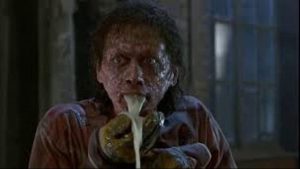The ecology of Escherichia coli O157:H7 is not well understood. The aims of this study were to determine the prevalence of and characterize E. coli O157:H7 associated with houseflies (HF).
 Musca domestica L. HF (n = 3,440) were collected from two sites on a cattle farm over a 4-month period and processed individually for E. coli O157:H7 isolation and quantification. The prevalence of E. coli O157:H7 was 2.9 and 1.4% in HF collected from feed bunks and a cattle feed storage shed, respectively. E. coli O157:H7 counts ranged from 3.0 × 101 to 1.5 × 105 CFU among the positive HF. PCR analysis of the E. coli O157:H7 isolates revealed that 90.4, 99.2, 99.2, and 100% of them (n = 125) possessed the stx1, stx2, eaeA, and fliC genes, respectively.
Musca domestica L. HF (n = 3,440) were collected from two sites on a cattle farm over a 4-month period and processed individually for E. coli O157:H7 isolation and quantification. The prevalence of E. coli O157:H7 was 2.9 and 1.4% in HF collected from feed bunks and a cattle feed storage shed, respectively. E. coli O157:H7 counts ranged from 3.0 × 101 to 1.5 × 105 CFU among the positive HF. PCR analysis of the E. coli O157:H7 isolates revealed that 90.4, 99.2, 99.2, and 100% of them (n = 125) possessed the stx1, stx2, eaeA, and fliC genes, respectively.
Large populations of HF on cattle farms may play a role in the dissemination of E. coli O157:H7 among animals and to the surrounding environment.
Association of Escherichia coli O157:H7 with houseflies on a cattle farm
July 2018
Applied and Environmental Microbiology vol. 84 no. 14
Muhammad Alam and Ludek Zurek
doi: 10.1128/AEM.70.12.7578-7580.2004
